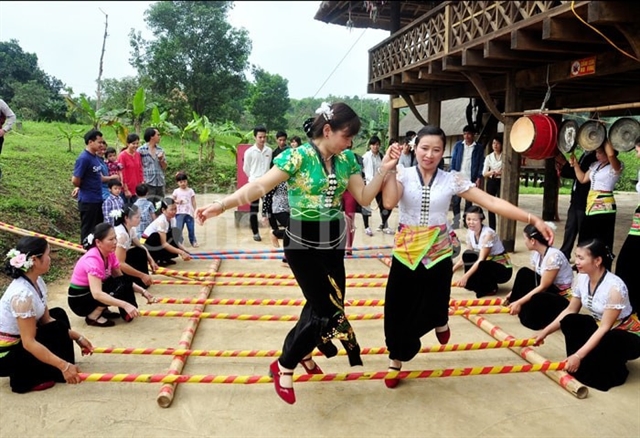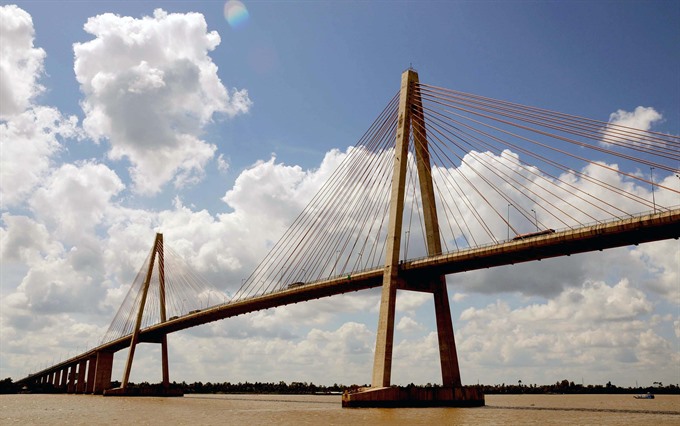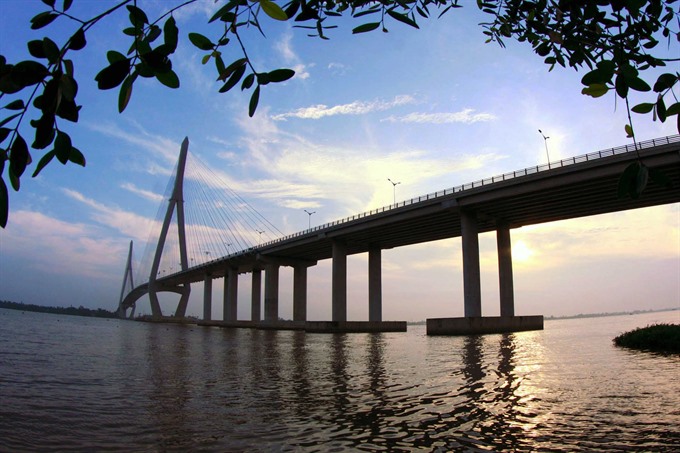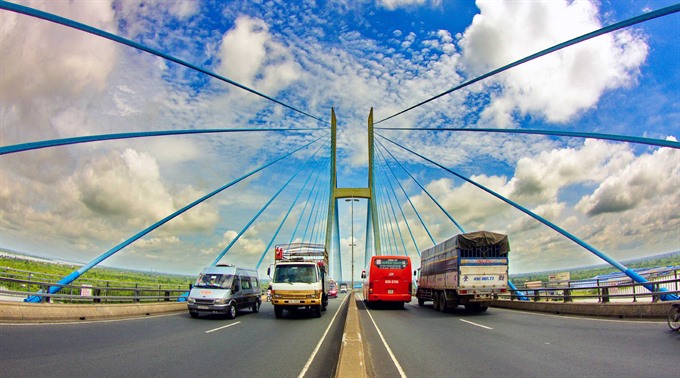 Life & Style
Life & Style

Ever since Việt Nam was reunified 42 years ago, people’s quality of life, especially in the Mekong Delta, has improved significantly.
 |
| Lifeline for locals: Connecting the two banks of the Tiền River between Tiền Giang Province’s Mỹ Tho City and Bến Tre Province, Rạch Miễu Bridge has greatly contributed to the socio-economic development of Bến Tre Province. – VNA/VNS Photo Duy Khương |
By An Phương
HCM CITY — Ever since Việt Nam was reunified 42 years ago, people’s quality of life, especially in the Mekong Delta, has improved significantly.
Commonly known as Việt Nam’s “rice basket”, the southern delta region is a watery landscape where boats, houses and markets float upon innumerable interconnected rivers, canals, and streams.
As daily life revolves around water, the region’s main forms of transport are ferries and different kinds of boats, including ghe and vỏ lãi, among others.
Though locals have grown up with these modes of transport, nothing can replace bridges, which have helped speed up travel from one province to another.
Nine major bridges exist in the Mekong Delta: Mỹ Thuận, Cần Thơ, Rạch Miễu, Hàm Luông, Năm Căn, Cổ Chiên, Mỹ Lợi, Vàm Cống, and Cao Lãnh.
Though some bridges opened only several years ago, they have already changed lives dramatically and opened up new financial opportunities to local residents.
Nguyễn Văn Đay, 51, who lives in Cà Mau Province’s Ngọc Hiển District, for example, once provided tourists with boat tours along Năm Căn District and Đất Mũi Commune for a living.
After the Năm Căn Bridge opened, however, he was able to set aside that job and focus on a small business selling dried fish, dried shrimp, and freshwater crabs, all of which are signature products of Cà Mau.
“I have to admit that my boat tourism business was negatively affected because traveling to places via Năm Căn Bridge became faster and more convenient,” he said. “But now that more tourists are visiting Cà Mau Cape (Việt Nam’s southernmost tip), I have a stable income which I never had before.”
The bridges in the delta have all promoted tourism and provided locals with more services but also boosted transport connections to HCM City.
As the Mekong Delta produces a substantial volume of the country’s food crops, building quality bridges across provinces ensures smooth food transport, which, in turn, benefits locals who make their living on rice, vegetable and fruit production.
Năm Khuây, 60, a local resident with 25 years in the orange business in Trà Vinh Province’s Cầu Kè District, said he had been able to earn more ever since the Cổ Chiên, Hàm Luông, and Bến Tre bridges were launched.
“Before, I had to travel a long distance along multiple canals and streams to get to Hóc Môn Market in HCM City to sell my fruits,” he said. “Since it took me one to two days, some of my fruits went bad, reducing my revenue.”
“Now it only takes me three to four hours to travel to HCM City. I can deliver fruits and return home within one day,” he said. “Some days, I can transport two rounds of products. The fruit is fresh and consumers no longer complain. I can save more money to support my family.”
Đay and Khuây all agreed that they felt more “civilised” and motivated after major bridge projects were implemented in their provinces.
“The Mekong Delta, after all, has a languid, almost soporific pace of life that is so different from modern cities,” Đay said.
“It might discourage people, especially younger generations, from thriving and doing something life-changing. But with bridges and perhaps more traffic infrastructure projects to come, locals will feel more connected to big cities and strive for better lives.”
Khuây added: “I can clearly see how life has been changing in my neighbourhood. People are happier and I can’t wait for future projects!”
Among the list of bridges, Vàm Cống and Cao Lãnh bridges have yet to be completed. But when they open in September, the Mekong Delta region is expected to further bloom, authorities said. — VNS
 |
| Big bridge: Cần Thơ Bridge spans the Hậu River, linking Cần Thơ and Vĩnh Long provinces. The 2.7-km-long bridge has the longest main span in Southeast Asia and is the 10th longest in the world. – VNA/VNS Photo Duy Khương |
 |
| Joint project: Mỹ Thuận Bridge, connecting Tiền Giang and Vĩnh Long provinces, was the first cable-stayed bridge in Việt Nam. The 1.536km long bridge was built in cooperation with Australian assistance. – VNA/VNS Photo Duy Khương |




